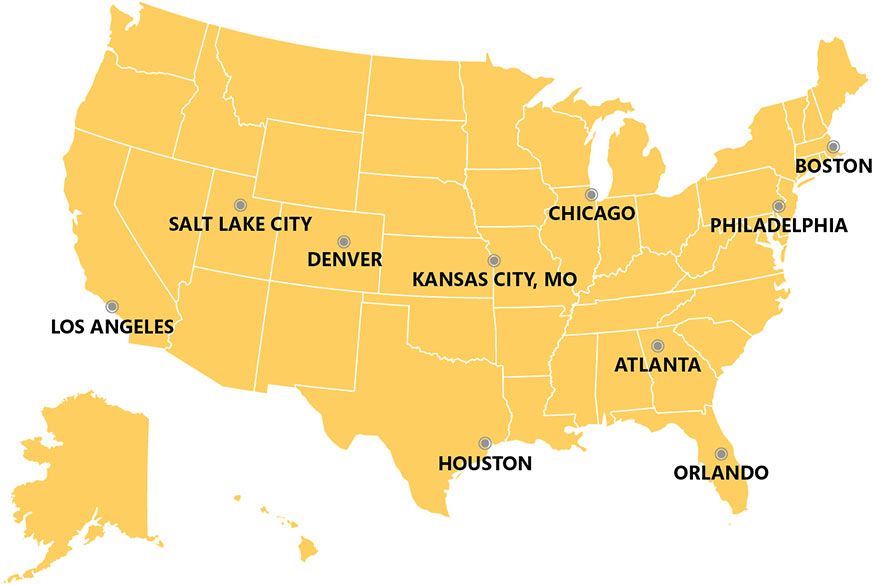Cities are where the majority of energy is used, can enforce the energy code, further efficiency through ordinances, and lead by example.
Learning from the “City Energy Project”
What Its Cities Have Accomplished, and Who It’s Engaging Next
We all know the great opportunities of acting on climate and energy from within local governments. Cities are where the majority of energy is used, cities have jurisdiction to enforce the energy code, further efficiency through ordinances, and lead by example in their own portfolios – and also have the ties to enable climate action in community projects. (We’re also seeing international calls to empower subnational actors on climate.)
We also know the challenges – local governments are resource-constrained, diverse in scale and structure, and responsible to stakeholders and communities with diverse needs and interests. The City Energy Project, a joint initiative of the Institute for Market Transformation (IMT) and the Natural Resources Defense Council (funded by Bloomberg Philanthropies, Doris Duke Charitable Foundation, and The Kresge Foundation) has worked to create infrastructure to mitigate these challenges by creating an inter-city sharing network and model framework for advancing city-level energy efficiency programs and policies. Representatives engaged with the City Energy Project (including Project leads from IMT, and Hilary Firestone from the City of Los Angeles Mayor’s Office) shared the City Energy Project’s best practices found to date, and next steps at August’s ACEEE Summer Buildings Study.

The City Energy Project has taken a phased approach to city engagement: in its recently completed Phase I, the Project worked with the ten cities of Atlanta, Boston, Chicago, Denver, Houston, Kansas City, Mo., Los Angeles, Orlando, Philadelphia, and Salt Lake City. Many of the ten cities of Phase I had energy efficiency goals at the time of engagement with the City Energy Project, and collaborated with the Project for three years to establish a working and replicable model to help additional cities develop and further energy efficiency goals.
The City Energy Project Model – and Lessons Learned
By engaging with the City Energy Project, Phase I cities were granted a staff member per city that was employed by IMT and NRDC and funded through the Project. These staff serve as the Project’s “City Advisors,” and work on the energy efficiency goals of the city in which they are embedded, typically within a city’s mayoral or managerial office; they also communicate closely with core IMT and NRDC expert staff that serve as a technical advisory team for all cities engaged in the Project. The Project uses this “hub and spoke” model to efficiently provide cities access to a core body of program and policy expertise, while also empowering and giving cities the bandwidth they need to lead their chosen projects. City Advisors also form an inter-city network through which check ins occur and cities can connect on best practices and lessons learned directly with each other.
One of the most interesting lessons that the City Energy Project is sharing from their work with Phase I cities is that energy benchmarking and transparency is a truly foundational policy that cities can’t ignore. Using findings and opportunities from benchmarking data, cities are able to then build further policies and more efficiently and effectively. As of August, five of the ten cities engaged had passed benchmarking policies, and the other five are actively working on passing similar policies. IMT leads also highlighted the importance of diverse local stakeholders being engaged and willing to support energy plans and policies; while IMT and NRDC staff can play an advisory role, testimonies from key community groups, community leaders and industry carry a different and critical kind of clout in a public meeting.
Phase I is now complete, and the process to engage cities for Phase II – which will include smaller and medium-sized cities – is just starting. Watch for the release of The City Energy Project: A Model for Rapid Energy Efficiency Policy Change in Major U.S. Cities. You can also keep watch for new case studies and best practices shared from the rollout of Phase II, and find more information on Phase I best practices at The City Energy Project’s website.
Local Government Commission Newsletters
Livable Places Update
CURRENTS Newsletter
CivicSpark™ Newsletter
LGC Newsletters
Keep up to date with LGC’s newsletters!
Livable Places Update – April
April’s article: Microtransit: Right-Sizing Transportation to Improve Community Mobility
Currents: Spring 2019
Currents provides readers with current information on energy issues affecting local governments in California.
CivicSpark Newsletter – March
This monthly CivicSpark newsletter features updates on CivicSpark projects and highlights.



